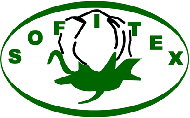DNA refinement is one of the most common lab techniques in biological exploration. It's used to separate genomic DNA from other cell parts, which allows scientists to study individual genes, string entire genomes or even change a small area of DNA. Yet , in spite of its importance in many applications, DNA purification is also probably the most complicated, time-consuming and labor intensive parts of fresh protocols.
The reason for this is that numerous DNA extraction methods require cellular lysis using detergents or chaotropic debris, followed by a couple of steps to take away impurities and medicine and recover high-quality genomic DNA. This may be a very time consuming process, particularly if the trials are huge or have intricate cell constructions.
Fortunately, a number of alternatives exist for this conventional approach that can provide you with much faster http://www.mpsciences.com/2021/04/15/gene-synthesis-and-transcription-processes/ and less complicated methods for organizing high-quality genomic DNA. Here are several of the best tips for DNA refinement.
Glass Dairy DNA Removal
The Bishop lab developed a simple and effective replacement for traditional phenol-chloroform organic DNA extractions called the tumbler milk process, which uses the fact that cellulose effectively binds nucleic acids. The cellulose can then be separated by DNA simply by paper towels (such as Whatman No . 1) and ethanol is combined with precipitate the DNA, which may then always be recovered in the elution buffer. This approach eliminates the usage of phenol and chloroform, which are both equally highly harmful and can bring about degradation of nucleic acidity molecules.
Additionally to lowering DNA filter time, the glass dairy method also increases DNA brings and provides nucleic acid that fits downstream applications such as PCR and Southern and dot/slot blotting. It can be capable of isolating GENETICS from mammalian cells and tissue, mouse button tails, seed cells, bacteria and thrush.

